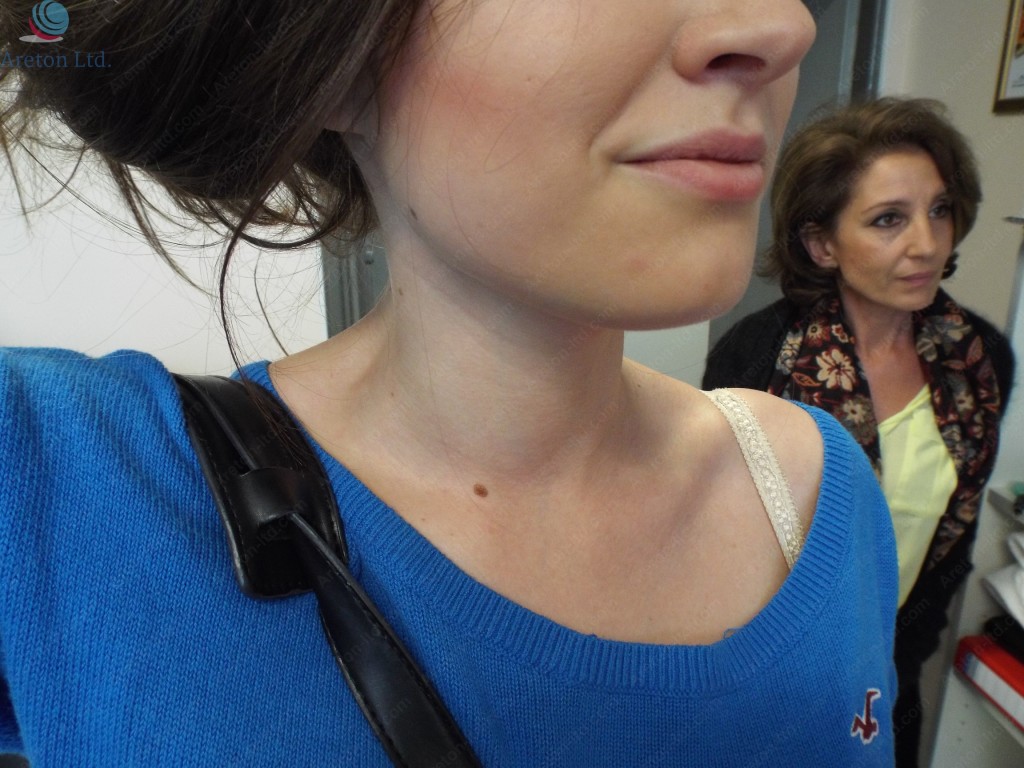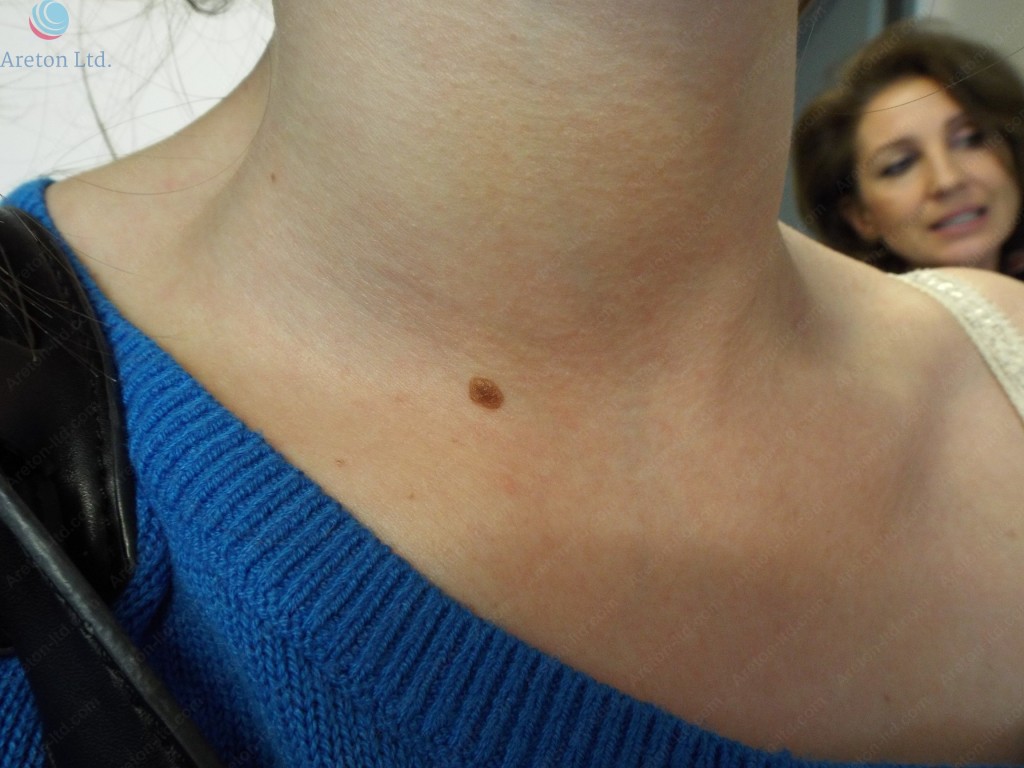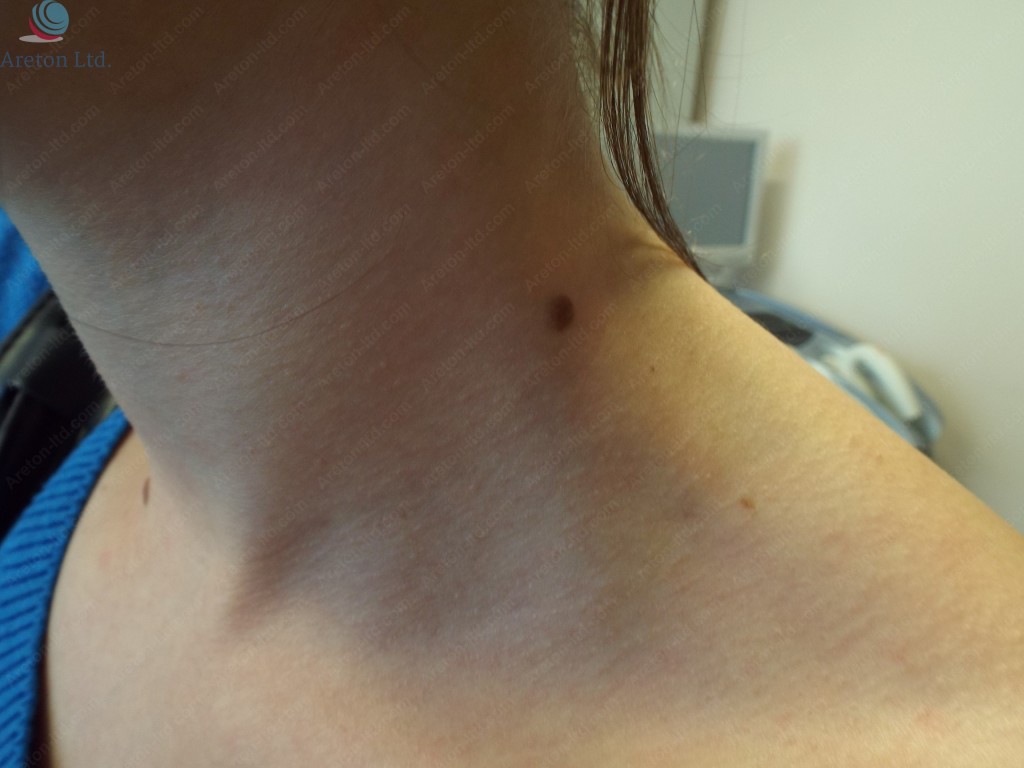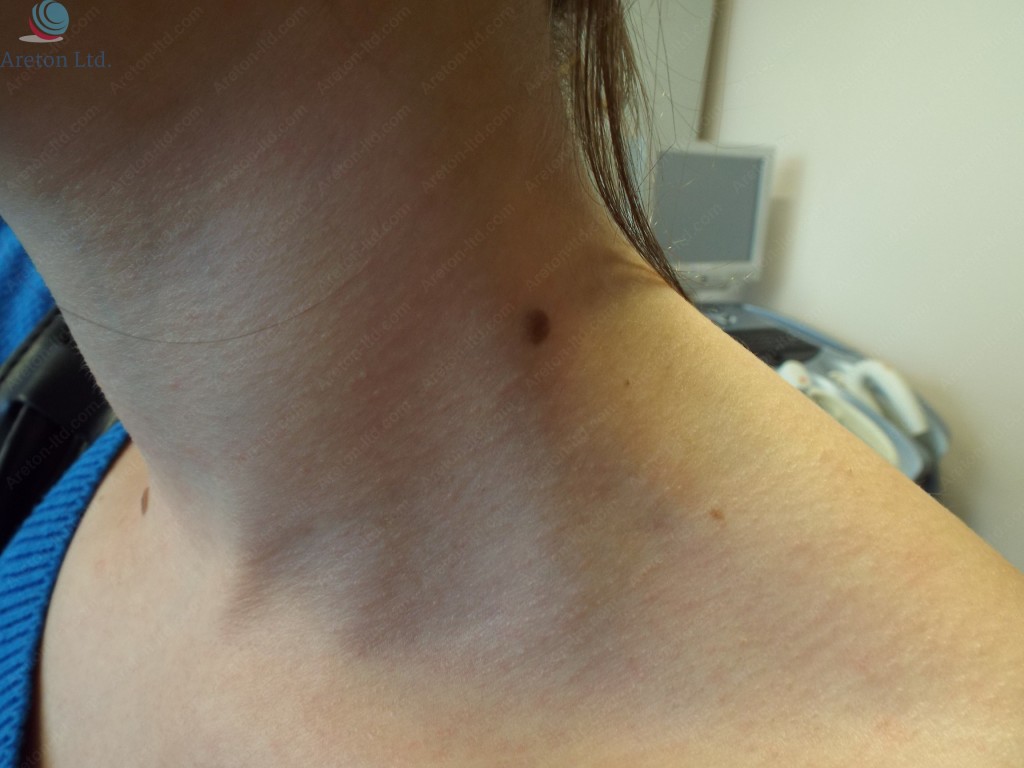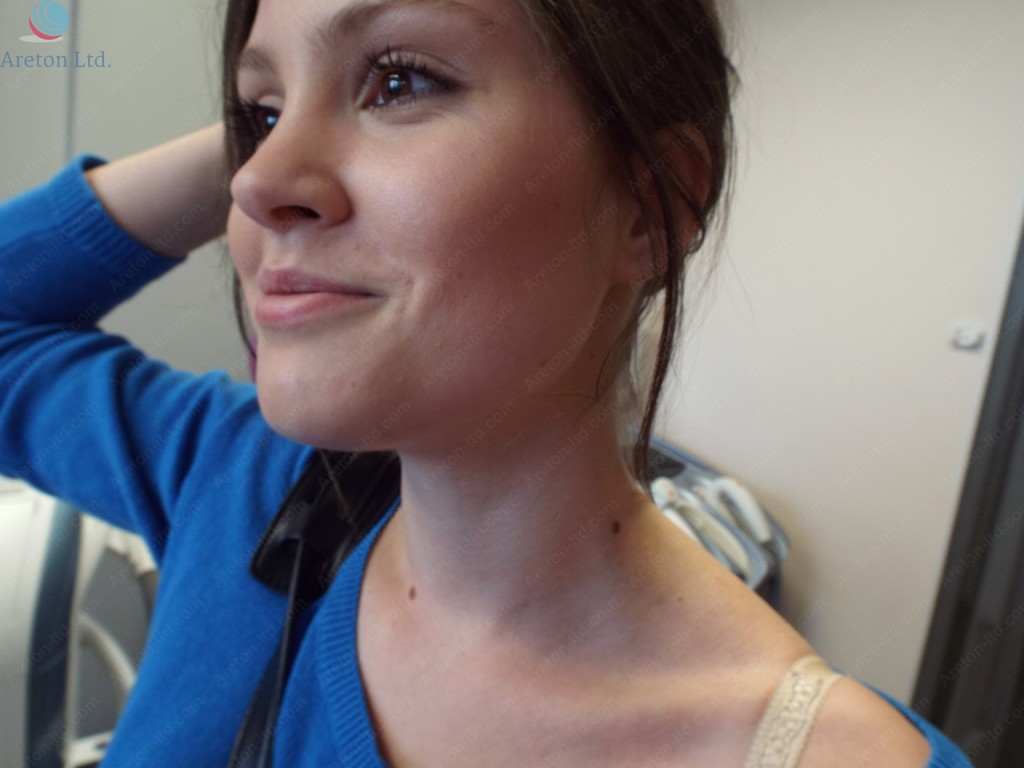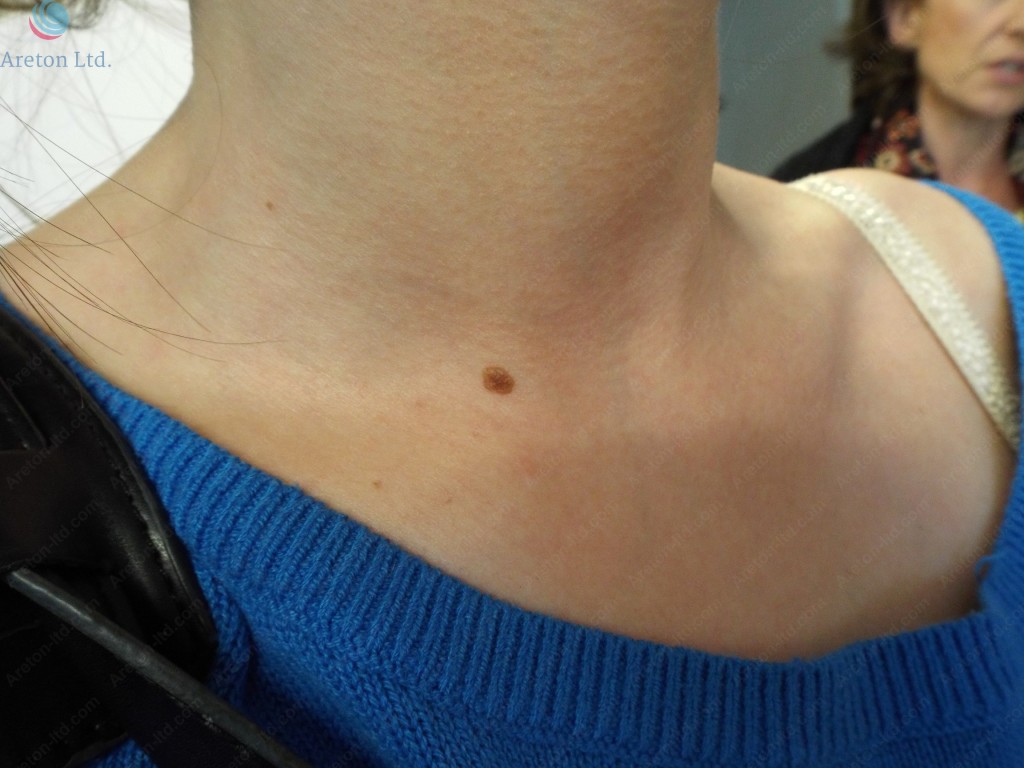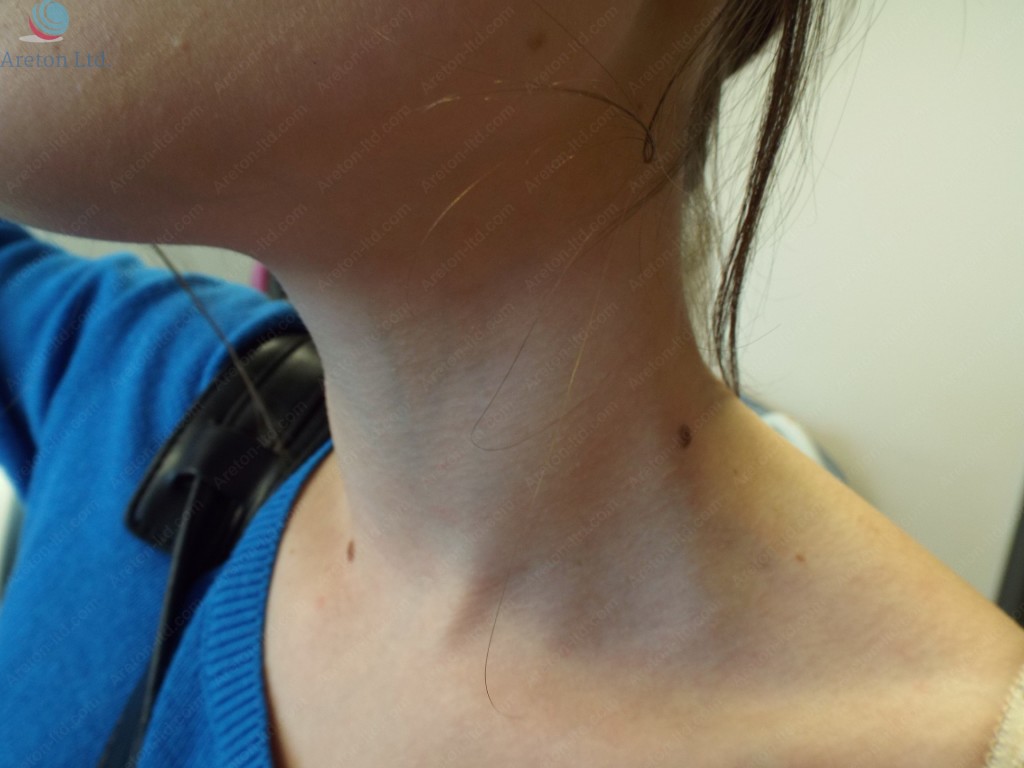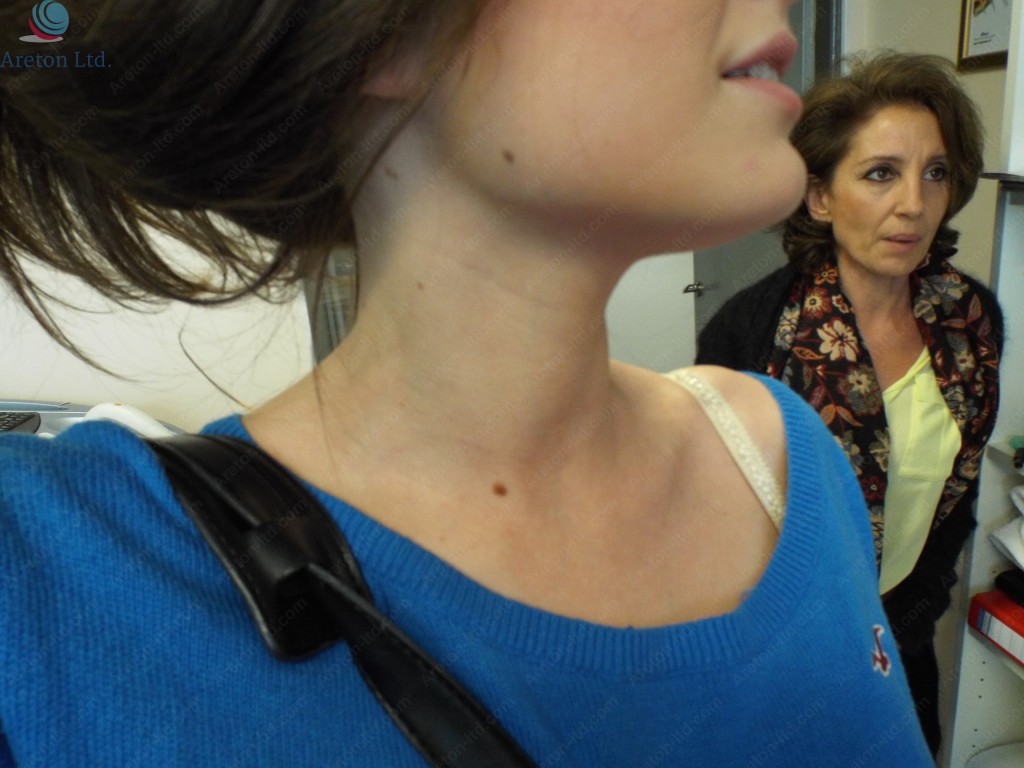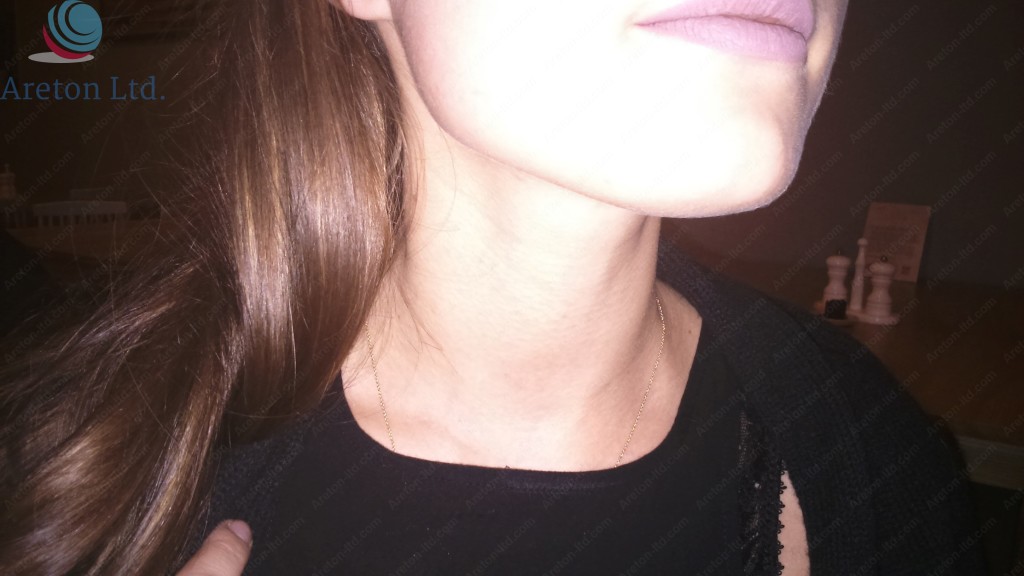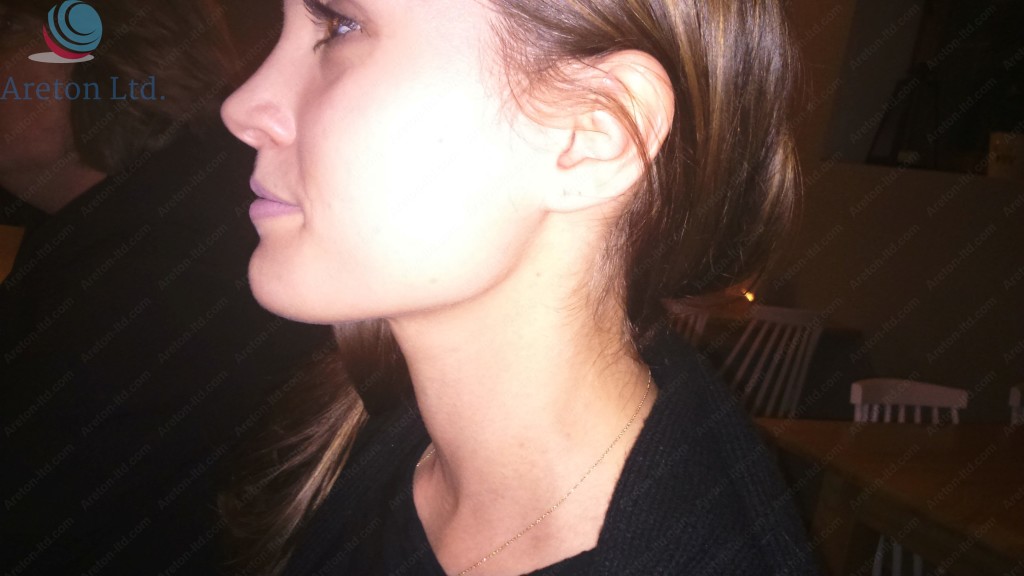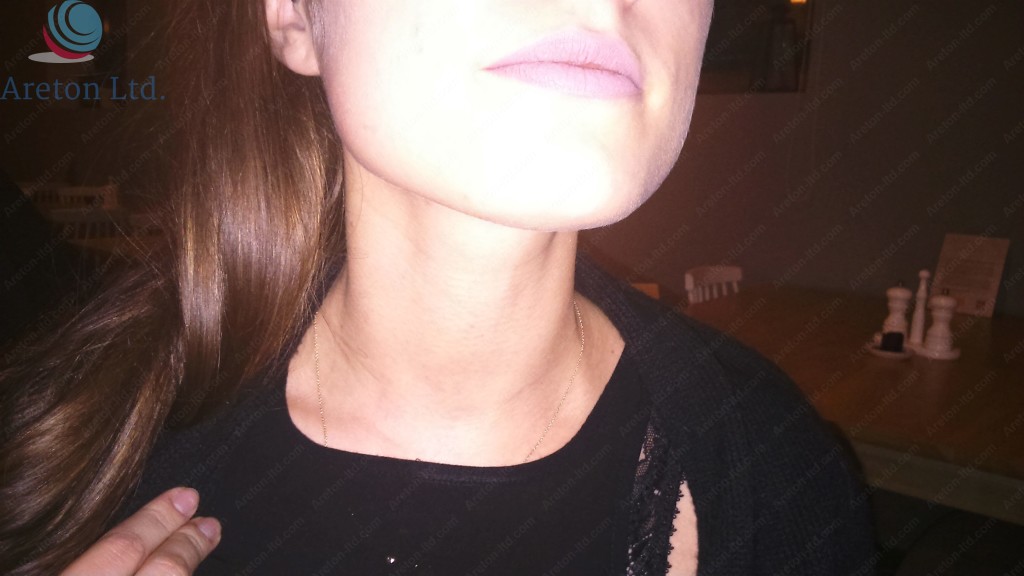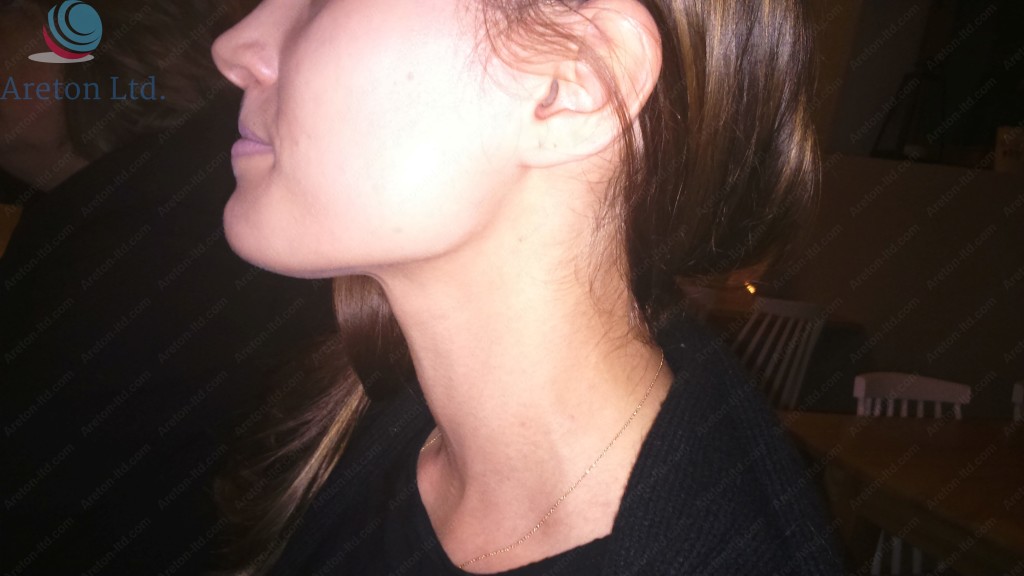[:en]
Benign Mole Removal Case Study
This aesthetic procedure was carried out in April 2014. The before pictures are shown in this case study were all taken just before carrying out the mole removal procedure. This case study shows the results of benign moles removal over two years after the procedure.
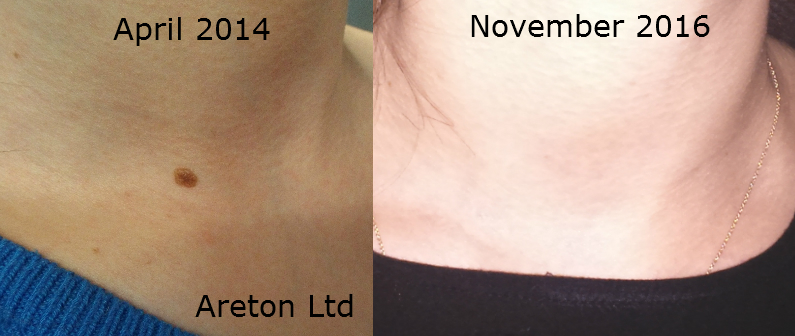
Mole removal results using Voltaic Plasma.
Because of this long time lapse, the area had the time required in order to return to normal. As we know, a few days after mole removal, the area treated is of a different texture and slightly pinker especially soon after the scabs have fallen off.
You can limit yourself to watch the video showing the before, after and how the procedure was carried out.
If the video was of interest than you can carry on reading more about this particular case study.
The subject was 20 years old at the time of the aesthetic procedure. The mole removal was requested for aesthetic reasons only. All moles were previously assessed and identified to be completely benign and therefore could be removed safely for aesthetic reasons. Benign mole removal would not have been required for medical reasons.
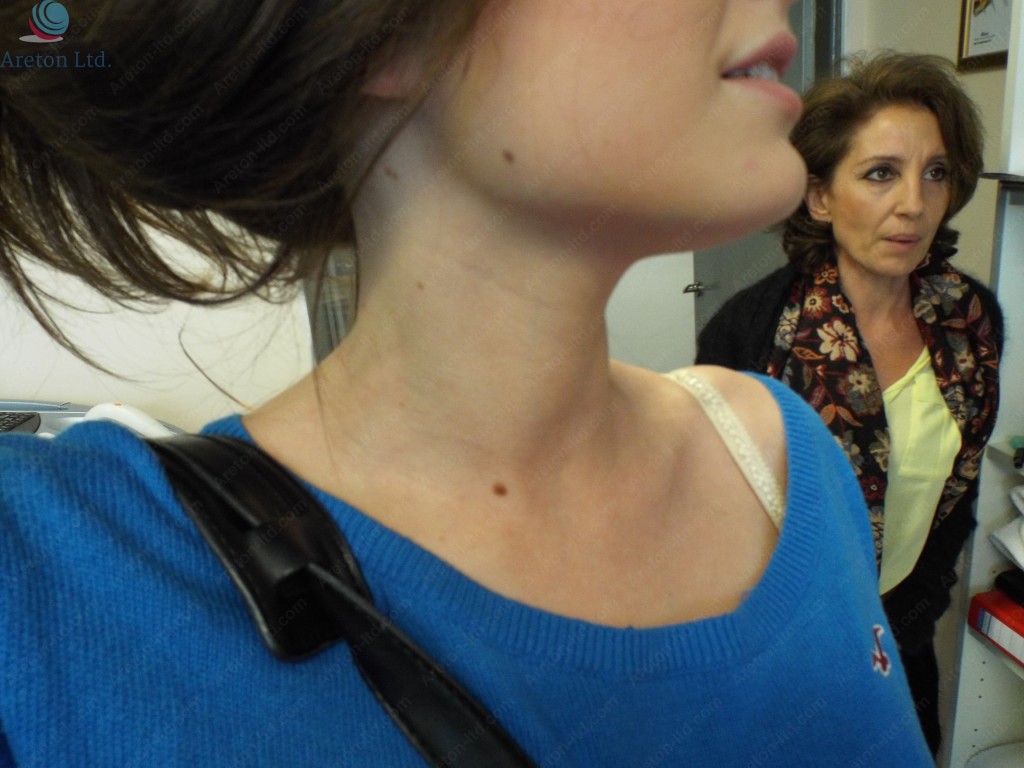
The subject, 20 years old at the time, requesting the mole removal for aesthetic reasons.
The type of moles in question was rather superficial, therefore the spray operation could be used in order to level off the moles with the surrounding skin in order to achieve good aesthetic results.
The aesthetic practitioner carrying out the procedure shown in this case study (Non-Medical Doctor at the time of the procedure) was under training and did not have any prior hands-on experience in removing benign skin lesions using Voltaic Plasma devices. She carried out the procedure under the direct supervision and direction of the trainer on the day.
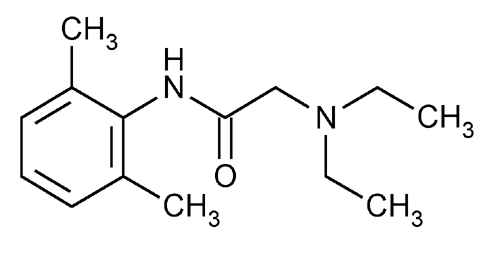
Lidocaine is the main ingredient of the numbing product used in this case study.
The procedure is painful or uncomfortable to be carried out without any numbing product. Some medical practitioners use injectable lidocaine, however, this is not strictly required because a good numbing product usually suffices to make the client at ease during the Voltaic Plasma mole removal procedure.
The use of most numbing topical products which can be purchased online or at the local chemist suffice in order to numb the area and allow fast removal and comfort to the subject. Their types of "over the counter" numbing products require occlusion to achieve the best numbing results.
In this case study, a custom-made professional numbing topical product was used therefore no occlusion was used.
This is a classic example of mole removal using Voltaic Plasma. In this case, the mole is medium sized and medium thick. The device used was the BeautyTeck used in three battery configuration. Initially, the power level was set at 20, (relatively high power) in order to remove the main bulk of the mole quickly. For this reason, the device was used at a relatively high power level at the beginning to speed up the removal by Carbonisation (or sublimation as referred by others for marketing purposes). At high power levels, the amount of tissue that can be carbonized is relatively high therefore this allows a coarse and relatively rapid removal of the main bulk of the mole.
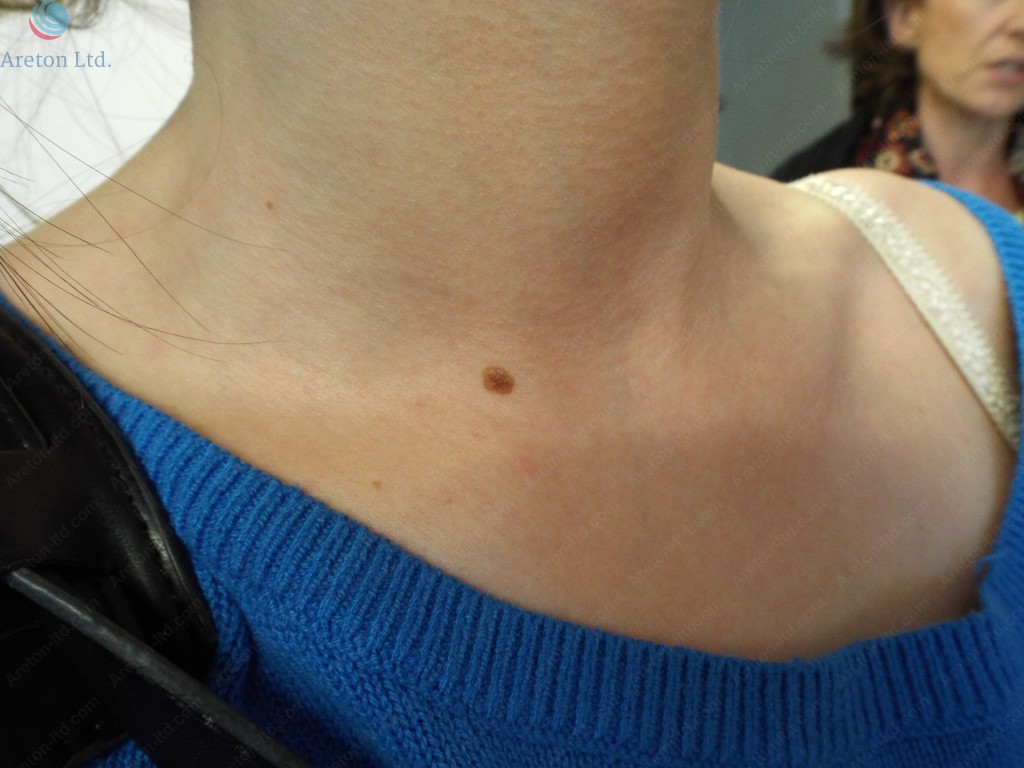
Medium size benign mole. The power level of the BeautyTeck device used was increased to 20 at the beginning of the treatment. Once the main bulk of the mole was removed the power level was reduced to 6/5 to achieve fine precision when removing the tiny remaining mole residues.
During the procedure, from time to time the carbon residues are removed by rubbing the carbonized area with a cotton pad impregnated with nonflammable antiseptic. When the carbon residues are removed the operator can have an appreciation of how much of the mole is still to be removed. It is very common in these procedures for the operator to run the finger on the moles every time after the carbon residues have been removed in order to feel the bump. After removing the carbon residues with the cotton pad, the aesthetic practitioner passes the finger on the mole to appraise how much of the bump is left.
This is a technique which had been used by several practitioners for a long time using also other devices like lasers.
When the area is almost flat, after the main bulk of the mole was removed, the minor mole residues are carbonized using the lowest possible power levels in this case level 5 to 6 were used to flatten the area with a high degree of precision and hence try to achieve the best aesthetic results. This is because the lower the power level of the device the less little tissue the arc will carbonize. therefore, reducing the power level allows the aesthetic practitioner to work with finer precision.This process is repeated until the bump has been removed and the area is completely flat.
Depending on the type of benign mole or skin lesion to be removed, sometimes even if the area has been flattened properly, further treatment after healing may be required to achieve the best aesthetic results. There are certain types of moles and benign skin lesions which can be removed for aesthetic reasons rooted a little deeper into the skin, therefore, a deeper ablation may be required in order to remove them all in one session. Knowing what type of mole or benign skin lesion you are dealing with alongside with an awareness of the physiology of the benign skin lesion can help you remove it within one session. However, if you are not sure, you can always flatten the mole and repeat the treatment after healing if required.
To summarize at the beginning the power level was high to allow a coarse and relatively rapid removal of the main bulk of the mole, when the mole residues were relatively little then the power level was reduced to allow the aesthetic practitioner to work with a high degree of precision and working with a higher degree of precision allows the user to achieve the best aesthetic results.
The before pictures were taken right before carrying out the Plasma mole removal in April 2016. The after pictures were taken in November 2016 because we had the opportunity to meet the subject again over 2 years after the procedure. As we can see, the aesthetic results are excellent, no trace of the previous mole can be found. In order words the results are seamless, meaning that it is not even possible to identify the spot were the mole resided before, even by a careful examination. We only knew the moles were there because we have the evidence and helped carry out the removal.
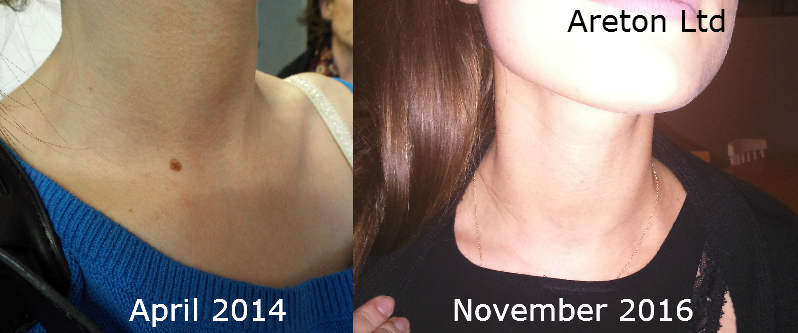
Plasma mole removal results using the BeautyTeck.
As we know, during the healing process the scab forms 3 days after the procedure and once the scabs fall off on their own the area becomes slightly pinker and it has a slightly different texture than the rest of the skin. Then this difference in skin texture and color usually fades on its own accord over time. In this case is it not possible to appraise these effects because of the longtime distance from the procedure. The location where the moles were previously located cannot be recognized and therefore the results are completely seamless.
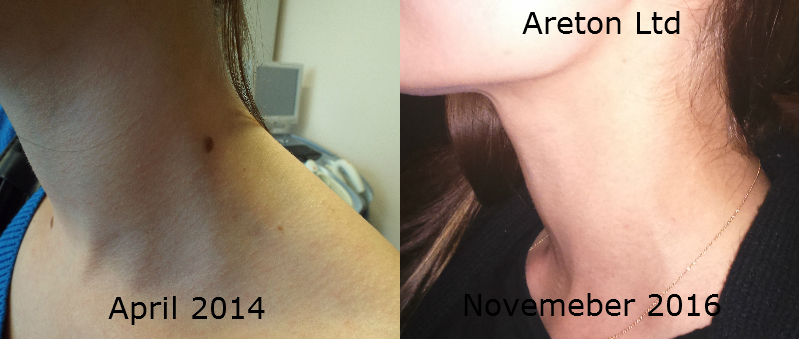
Normally the area treated has a slightly different skin texture over a few weeks after the aesthetic procedure, this is normal and, as seen in this example, the area usually blends very well over time.
As we have seen in this case study, the moles have been removed without leaving a trace. Because these types of results are possible, it has become customary to promise and advertise seamless and scar-free results after mole removal procedures.
In reality, there is no guarantee that any benign skin lesion can be removed without scarring or without leaving some permanent skin texture difference of some sort. Unfortunately, there is no device or method or procedure which can guarantee scar-free results every time even when the procedure is carried out correctly. This is because there are too many factors affecting the end results, one of them being the after-care.
However even if the removal procedure is carried out correctly and the after-care followed to the letter, the way the individual skin recovers is different from person to person and some people can be more prone than others to develop scarring, permanent change in skin texture, hyperpigmentation etc.
However, there are clinics advertising scar-free removal. It is our opinion that although the likelihood of the development of scars or permanent skin texture change is statistically very low, the likelihood of developing undesired long-term adverse reactions can be minimised, however can never be completely ruled out despite the method used; therefore seamless results should not be promised since there are far too many factors affecting the final results even if the treatment were carried out in a perfect fashion.
Adverse reactions like scarring to mole removal procedures, in general, are very rare, however when they occur this may likely be due to:
→ poor after-care,
→ infection which had developed during healing,
→ the scabs have been removed forcefully or
→ skin reaction of the specific individual.
Out those adverse effects very rarely a long-term adverse reaction is directly caused by the mole removal procedure itself.
The area was washed twice a day using mild neutral soap until the scab formed. Also, no creams of any type were applied during healing.
In this case, no sun protection was used as the treatment was carried out in Poland where the UV light is relatively weak.
The scab formed 3 days after the treatment. Then it then fell off on its own accord 7 days after the procedure. The part looked pinker and the skin texture was slightly different than the surrounding skin area for a few weeks. This is a normal reaction because of the new skin forming instead of the mole that had been removed. This change in texture and difference in color usually subsides and blends with the surrounding skin slowly over time. This process can take a few weeks. Generally two to three months.
Like in this case, if the area is looked after properly the scab should form the third or fourth day after the treatment. In case it has not formed on the fourth day, this may mean that the area is not healing correctly and the likelihood of developing long-term scarring or skin other adverse reactions is higher.
[:es]
Estudio de caso de eliminación de lunar benigno
Este procedimiento estético se llevó a cabo en abril de 2014. Las fotografías anteriores se muestran en este estudio de caso, todas se tomaron justo antes de llevar a cabo el procedimiento de extracción de lunares. Este estudio muestra los resultados de la remoción de lunares benignos durante dos años después del procedimiento.

Resultados de la eliminación de lunares utilizando plasma voltaico.
Debido a este largo lapso de tiempo, el área tuvo el tiempo requerido para volver a la normalidad. Como sabemos, unos días después de la remoción de lunares, el área tratada es de una textura diferente y un poco más rosada, especialmente poco después de que se hayan caído las costras.
Puede limitarse a ver el vídeo que muestra el antes, el después y cómo se realizó el procedimiento..
Si el video fue de su interés, puede seguir leyendo más sobre este estudio de caso en particular.
El sujeto tenía 20 años en el momento del procedimiento estético. La remoción de lunares fue solicitada solo por razones estéticas. Todos los lunares se evaluaron previamente y se identificaron como completamente benignos y, por lo tanto, podrían eliminarse de manera segura por razones estéticas. La eliminación de lunares benigna no se hubiera requerido por razones médicas.

El sujeto, 20 años de edad en el momento, solicitó la eliminación de lunares por razones estéticas.
El tipo de lunares en cuestión era bastante superficial, por lo tanto, la operación de barrido (Spray) podría usarse para nivelar los lunares con la piel circundante para lograr buenos resultados estéticos.
El profesional de la estética que realizó el procedimiento que se muestra en este estudio(médico no médico en el momento del procedimiento) estaba en formación y no tenía ninguna experiencia previa en la eliminación de lesiones benignas de la piel con dispositivos de plasma Voltaico. Ella llevó a cabo el procedimiento bajo la supervisión directa y la dirección del entrenador en el día.

La lidocaína es el ingrediente principal del producto anestésico utilizado en este estudio.
El procedimiento es doloroso o incómodo de realizar sin ningún producto anestésico. Algunos médicos usan lidocaína inyectable, sin embargo, esto no es estrictamente necesario porque un buen producto para adormecer suele ser suficiente para que el cliente se sienta cómodo durante el procedimiento de extracción de lunares con plasma Voltaico.
El uso de la mayoría de los productos tópicos para adormecer que se pueden comprar en línea o en una farmacia local es suficiente para adormecer el área y permitir una rápida eliminación y comodidad del sujeto. Sus tipos de productos anestésicos "de venta libre" requieren oclusión para lograr los mejores resultados adormecedores.
En este estudio de caso, se usó unproducto tópico anestésico profesional a medida, por lo que no se usó oclusión.
Este es un ejemplo clásico de eliminación de lunares usando Plasma voltaico.. En este caso, el lunar es de tamaño mediano y medio grueso. El dispositivo utilizado fue el BeautyTeck utilizado en la configuración de tres baterías. Inicialmente, el nivel de potencia se estableció en 20, (potencia relativamente alta) para eliminar rápidamente la mayor parte del la masa. Por esta razón, el dispositivo se usó a un nivel de potencia relativamente alto al principio para acelerar la eliminación por carbonización (o la sublimación según lo referido por otros con fines de marketing). A niveles de potencia elevados, la cantidad de tejido que puede ser carbonizado es relativamente alta, por lo tanto, esto permite una eliminación gruesa y relativamente rápida de la masa principal del lunar.

Lunar benigno de tamaño mediano. El nivel de potencia del dispositivo BeautyTeck utilizado se aumentó a 20 al comienzo del tratamiento. Una vez que se eliminó la masa principal del lunar, el nivel de potencia se redujo a 6/5 para lograr una precisión fina al eliminar los diminutos residuos de lunar restantes..
Durante el procedimiento, de vez en cuando los residuos de carbono se eliminan frotando el área carbonizada con una almohadilla de algodón impregnada con un antiséptico no inflamable. Cuando se eliminan los residuos de carbono, el operador puede apreciar la cantidad de lunar que aún debe eliminarse. Es muy común en estos procedimientos que el operador pase el dedo por los lunares cada vez que se hayan eliminado los residuos de carbono para sentir la masa. Después de eliminar los residuos de carbón con la almohadilla de algodón, el profesional de la estética pasa el dedo sobre el lunar para evaluar la cantidad de la protuberancia que queda.
Esta es una técnica que ha sido utilizada por varios practicantes durante mucho tiempo usando también otros dispositivos como los láseres.
Cuando el área es casi plana, después de que se eliminó la mayor parte del lunar, los residuos de lunares menores se carbonizan utilizando los niveles de potencia más bajos posibles; en este caso, los niveles 5 a 6 se utilizaron para aplanar el área con un alto grado de precisión y, por lo tanto, se intenta conseguir los mejores resultados estéticos. Esto se debe a que cuanto menor sea el nivel de potencia del dispositivo, menor será la cantidad de tejido que el arco carbonizará. por lo tanto, reducir el nivel de potencia permite que el profesional de la estética trabaje con una precisión más fina. Este proceso se repite hasta que se elimina la protuberancia y el área es completamente plana.
Dependiendo del tipo de lunar benigno o de la lesión de la piel que se va a eliminar, a veces incluso si el área se ha aplanado correctamente, puede ser necesario un tratamiento adicional después de la curación para lograr los mejores resultados estéticos. Existen ciertos tipos de lunares y lesiones benignas de la piel que pueden eliminarse por razones estéticas enraizadas un poco más en la piel, por lo tanto, puede ser necesaria una ablación más profunda para eliminarlos todos en una sesión. Saber qué tipo de lunar o lesión benigna de la piel con la que está tratando, junto con un conocimiento de la fisiología de la lesión benigna de la piel, puede ayudarlo a eliminarlo en una sesión. Sin embargo, si no está seguro, siempre puede aplanar el lunar y repetir el tratamiento si es necesario.
Para resumir al principio, el nivel de potencia era alto para permitir una eliminación gruesa y relativamente rápida de la masa principal del lunar, cuando los residuos de lunar eran relativamente pequeños, se redujo el nivel de potencia para permitir que el profesional estético trabajara con un alto grado. La precisión y el trabajo con un mayor grado de precisión permiten al usuario lograr los mejores resultados estéticos.
Las fotografías anteriores se tomaron justo antes de realizar la extracción de lunares de plasma en abril de 2016. Las fotografías posteriores se tomaron en noviembre de 2016 porque tuvimos la oportunidad de volver a encontrarnos con el tema más de 2 años después del procedimiento. Como podemos ver, los resultados estéticos son excelentes, no se encuentran rastros del lunar anterior. En pocas palabras, los resultados son ininterrumpidos, lo que significa que ni siquiera es posible identificar el lugar donde residía el topo antes, incluso mediante un examen cuidadoso. Solo sabíamos que los topos estaban allí porque tenemos la evidencia y ayudamos a llevar a cabo la eliminación.

Resultados de la eliminación de lunares con plasma usando el BeautyTeck.
Como sabemos, durante el proceso de cicatrización, la costra se forma 3 días después del procedimiento y una vez que las costras se caen solas, el área se vuelve un poco más rosada y tiene una textura ligeramente diferente a la del resto de la piel. Entonces, esta diferencia en la textura y el color de la piel generalmente se desvanece por sí sola con el tiempo. En este caso, no es posible evaluar estos efectos debido a la larga distancia del procedimiento. La ubicación en la que se localizó las masas anteriormente no se puede reconocer y, por lo tanto, los resultados son completamente perfectos..

Normalmente, el área tratada tiene una textura de piel ligeramente diferente durante unas pocas semanas después del procedimiento estético, esto es normal y, como se ve en este ejemplo, el área generalmente se mezcla muy bien con el tiempo.
Como hemos visto en este estudio, los lunares se han eliminado sin dejar rastro. Debido a que estos tipos de resultados son posibles, se ha vuelto habitual prometer y anunciar resultados sin problemas y sin cicatrices después de los procedimientos de eliminación de lunares.
En realidad, no hay garantía de que cualquier lesión benigna de la piel pueda eliminarse sin dejar cicatrices o sin dejar alguna diferencia permanente en la textura de la piel de algún tipo. Desafortunadamente, no existe ningún dispositivo, método o procedimiento que pueda garantizar resultados sin cicatrices, incluso cuando el procedimiento se lleva a cabo correctamente. Esto se debe a que hay demasiados factores que afectan los resultados finales, uno de ellos es el post tratamiento.
Sin embargo, incluso si el procedimiento de extracción se lleva a cabo correctamente y el seguimiento posterior a la hoja, la forma en que la piel se recupera es diferente de una persona a otra y algunas personas pueden ser más propensas que otras a desarrollar cicatrices, cambios permanentes en la textura de la piel, hiperpigmentacion etc.
Sin embargo, hay publicidad de clínicas sin eliminación de cicatrices. Nuestra opinión es que aunque la probabilidad de que aparezcan cicatrices o cambios permanentes en la textura de la piel es estadísticamente muy baja, la probabilidad de desarrollar reacciones adversas no deseadas a largo plazo se puede minimizar, sin embargo, nunca se puede descartar por completo a pesar del método utilizado; por lo tanto, no deben prometerse resultados sin problemas, ya que hay demasiados factores que afectan los resultados finales, incluso si el tratamiento se llevó a cabo de manera perfecta.
Las reacciones adversas como la cicatrización de los procedimientos de remoción de lunares, en general, son muy raras, sin embargo, cuando ocurren, es probable que esto se deba a:
→ pobre cuidado posterior,
→ infección que se había desarrollado durante la curación,
→ las costras se han eliminado con fuerza o
→ Reacción cutánea del individuo específico.
Fuera de esos efectos adversos muy rara vez, una reacción adversa a largo plazo es causada directamente por el propio procedimiento de eliminación de lunares.
El área se lavó dos veces al día con jabón neutro suave hasta que se formó la costra. Además, no se aplicaron cremas de ningún tipo durante la curación.
En este caso, no se usó protección solar ya que el tratamiento se llevó a cabo en Polonia, donde la luz UV es relativamente débil.
La costra se formó 3 días después del tratamiento. Luego se cayó por sí solo 7 días después del procedimiento. La parte parecía más rosada y la textura de la piel fue ligeramente diferente a la del área circundante de la piel durante algunas semanas. Esta es una reacción normal debido a la formación de nueva piel en lugar del lunar que se había eliminado. Este cambio en la textura y la diferencia en el color generalmente desaparece y se mezcla con la piel circundante lentamente con el tiempo. Este proceso puede tardar unas semanas. Generalmente de dos a tres meses.
Como en este caso, si el área se cuida adecuadamente, la costra debe formar el tercer o cuarto día después del tratamiento. En caso de que no se haya formado en el cuarto día, esto puede significar que el área no se está curando correctamente y la probabilidad de desarrollar cicatrices a largo plazo o en la piel otras reacciones adversas sea mayor.
[:]

